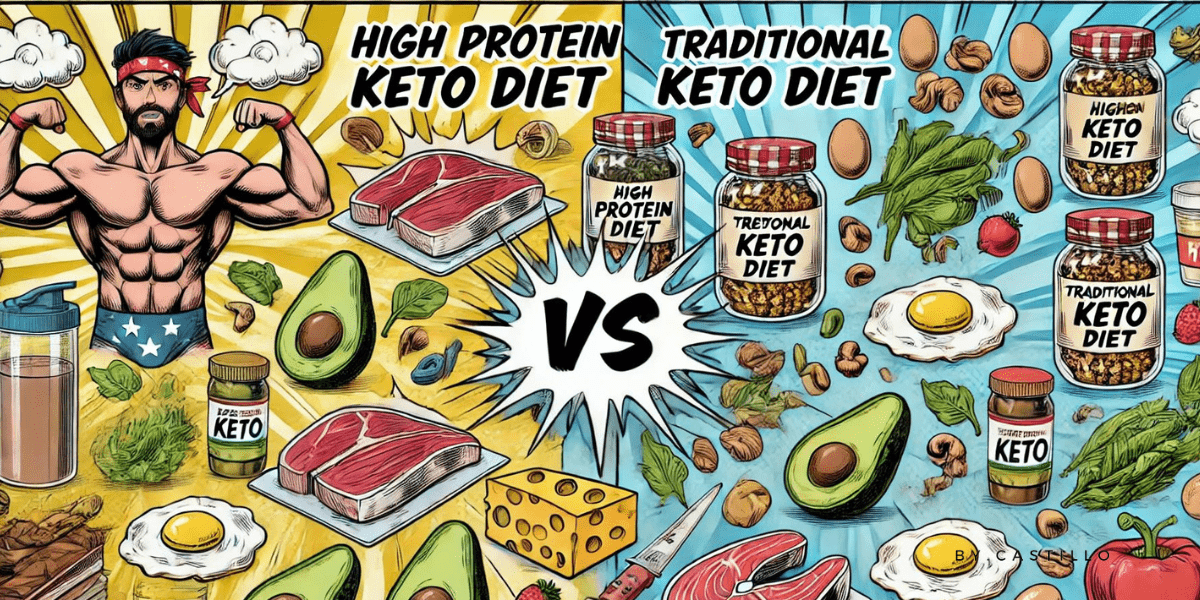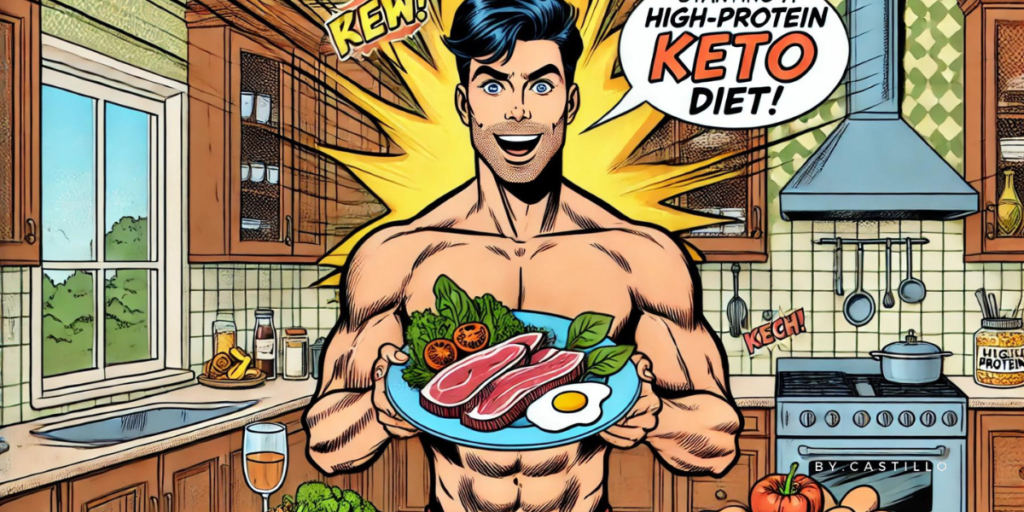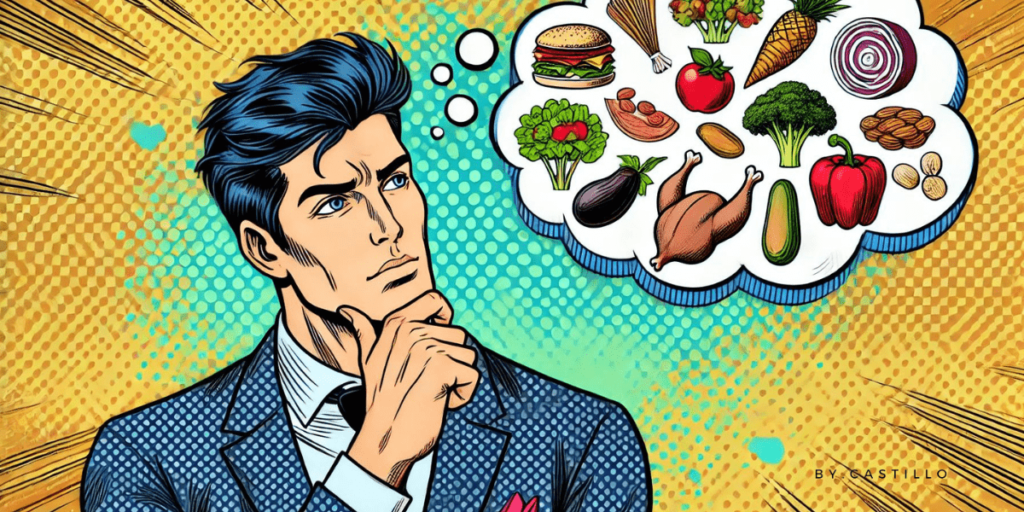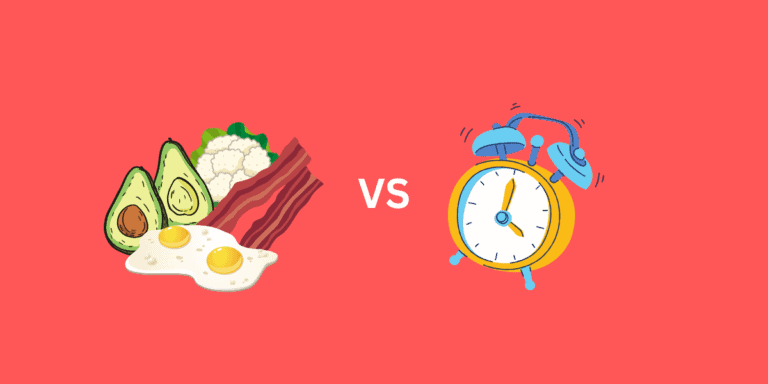The High-Protein Ketogenic Diet For Weight Loss: Benefits, Risks, and How to Get Started

Are you struggling to lose weight? Do you want to try a low-carb diet but worry about losing muscle? The high-protein ketogenic diet (HPKD) might be the answer. Compared to other high-protein diets, this twist on the classic keto diet promises weight loss while helping you keep your hard-earned muscle. In this post, we’ll explore what the high-protein ketogenic diet is, who it’s for, how to get started, what to eat, what to avoid, benefits, and risks.
Key Takeaways
The high-protein ketogenic diet is a low-carb eating plan with more protein than the traditional keto diet
It aims for 60% fat, 35% protein, and 5% carbs, compared to traditional keto’s 75% fat, 20% protein, and 5% carbs
This diet may benefit athletes, bodybuilders, and those wanting to preserve muscle while losing fat
- Consult with a professional dietitian if you have an existing kidney dysfunction
What is The High Protein Ketogenic Diet?

The high-protein ketogenic diet (HPKD) is a low-carb diet that combines aspects of the keto diet with increased protein intake. Unlike the traditional ketogenic diet, which focuses heavily on fat, this version aims to preserve muscle mass while still promoting fat loss.
The extra protein intake on this diet will provide more essential amino acids, which will help support muscle maintenance and overall health.
Here’s how the high protein ketogenic diet macronutrients compare to the traditional keto diet:
HPDK: 60% fat, 35% protein, 5% carbs
Traditional Keto Diet: 75% fat, 20% protein, 5% carbs
It’s important to keep carb intake low to achieve ketosis, as restricting carbohydrates helps the body switch to burning fat for fuel.
So, don’t overthink it!
Increase your protein intake and adjust your healthy fat intake accordingly.
Who is The High Protein Ketogenic Diet For?

This diet is suitable for individuals who want to lose fat while preserving muscle mass. Increasing the protein intake will help the body repair and grow muscle, even while in a calorie deficit. Protein intake can be adjusted based on body weight to meet individual needs, ensuring optimal muscle preservation and weight loss.
Reasons To Consider The High-Protein ketogenic diet
You’re an athlete or bodybuilder
You want to build or maintain muscle while losing fat
You struggle with hunger on the traditional keto diet
You want to improve your body composition
How to Get Started on The High Protein Ketogenic Diet

Starting this diet requires some planning and adjustments to your eating habits.
Here are the steps to begin:
Calculate your macronutrient needs
Plan your meals around the high-protein and low-carb foods.
Gradually reduce carbs and increase protein and healthy fats
Stay hydrated and consider supplementing with electrolytes to avoid the keto flu
Monitor your ketone levels to ensure you’re in ketosis for weight/fat loss
Pro Tip: You can monitor your ketone levels with keto strips, and keto meters. Or you can go off the way you feel. Most people report high energy while having mental clarity and focus while in ketosis.
What to Eat and What Not to Eat

To succeed on the high-protein ketogenic diet, you need to know which foods to include and which to avoid. This diet fits into the broader category of low-carb diets, which are known for their potential health benefits such as weight loss, fat loss, and blood sugar control.
Below is a list of foods to help you get an idea of what to eat and what to avoid.
Healthy Fats:
Avocados
Olive Oil
Coconut oil
Nuts and seeds
Protein-Rich Foods:
Eggs
Chicken
Fish
Lean Beef
Low Carb Foods:
Leafy greens
Broccoli
Cauliflower
Zucchini
Foods to Avoid:
Sugar and sweets
Grains and starches
High-carb fruits
Processed foods
To view additional keto-friendly food options read our 13 Keto Tips.
Benefits of The High Protein Ketogenic Diet

This diet offers several potential benefits, especially for those looking to improve their body composition.
Key benefits include:
Faster weight loss
Better muscle preservation
Reduced hunger and cravings
Improved blood sugar control
Increased energy and mental clarity
Risks of The High-Protein Ketogenic Diet

While this diet can be effective, it’s not without risks. One main concern is that excess protein can make it harder to stay in ketosis. This happens because your body can convert protein to glucose through a process called gluconeogenesis.
High protein diets have been associated with potential negative health effects, such as an increased risk of heart disease, heart failure, and certain cancers. But, this may be a rare occurrence on the high protein ketogenic diet since it prioritizes higher amounts of healthy fat intake than protein.
It’s highly recommended to talk to a registered dietitian before starting the high-protein ketogenic diet if you have an existing kidney dysfunction. Long-term high protein intake may lead to de novo chronic kidney disease.
It’s crucial to find the right balance of protein intake. Too much protein might kick you out of ketosis, while too little could lead to muscle loss. Working with a registered dietitian can help you find the right balance for your needs.
Wrapping up
The high-protein ketogenic diet offers a unique approach to weight loss and body composition improvement. By increasing protein intake while maintaining the low-carb principles of keto diets, this eating plan aims to help you shed fat while preserving muscle mass.
Remember, while the high-protein ketogenic diet can be effective for some, it’s not a one-size-fits-all solution. It’s crucial to consider your individual health needs and goals before starting any new diet.
If you’re thinking about trying this approach, consult with a healthcare professional or registered dietitian to ensure it’s the right choice for you and to get personalized guidance on implementing it safely and effectively.
FAQs
Can you get into ketosis with high protein?
Yes, but it may be more challenging. You’ll need to carefully balance your protein intake to avoid excess that could be converted to glucose.
Is it ok to only eat protein with no carbs?
Eating only protein without carbs or fat isn’t recommended. Your body needs a balance of nutrients for optimal health and function.
How much weight can I lose with the high-protein ketogenic diet?
Weight loss varies by individual, but some people report losing 1-2 pounds per week on this diet.
Is the high-protein ketogenic diet easier to start than the traditional ketogenic diet?
Some find it easier due to increased protein keeping them fuller, but others may find it harder to stay in ketosis.
How does the ketogenic diet help you burn fat?
The ketogenic diet works by shifting your body into ketosis once all your glycogen stores (stored sugar) are depleted from the body. When this happens your body starts burning fat for fuel.




![Keto Slim Drops Review [2024]: Is It Worth Trying?](https://bycastillo.com/wp-content/uploads/2024/09/REVIEWED-Keto-Slim-Drops-Blog-Banner-768x439.png)

